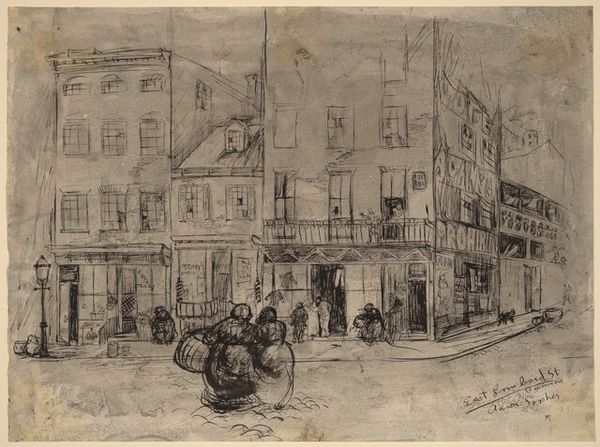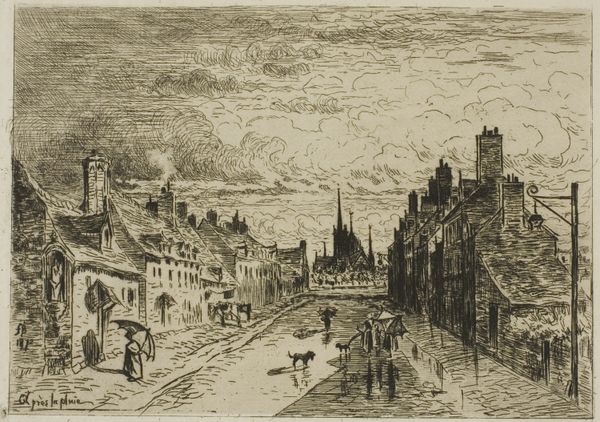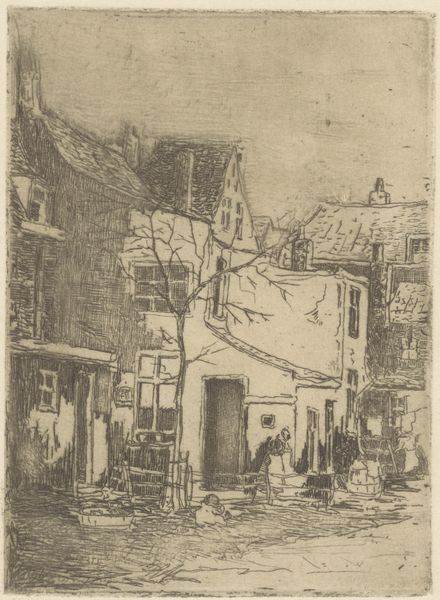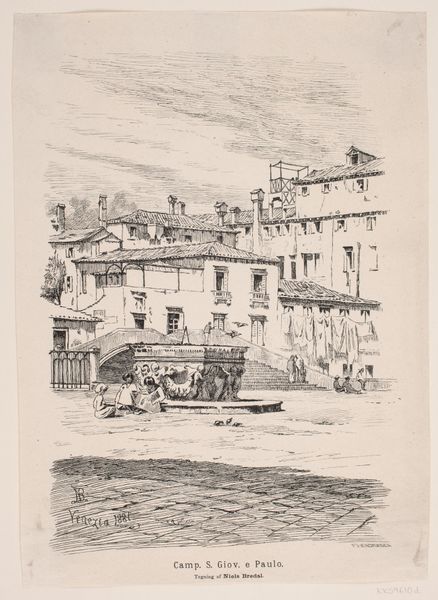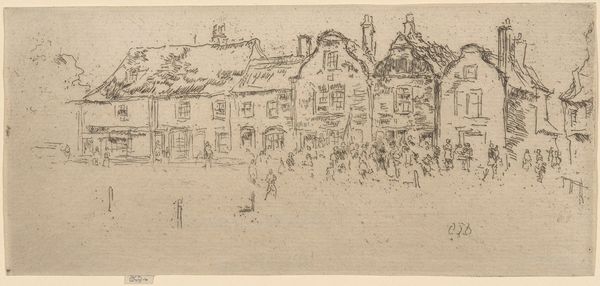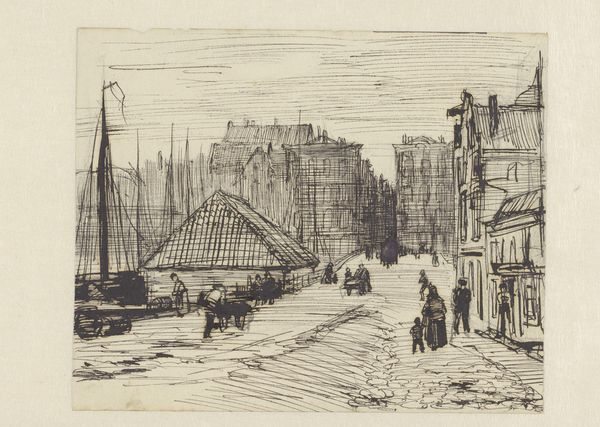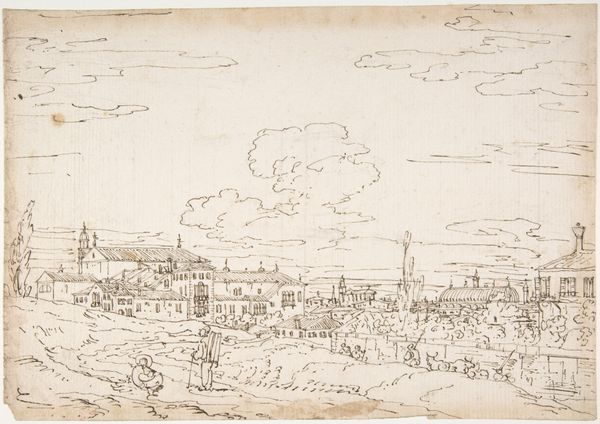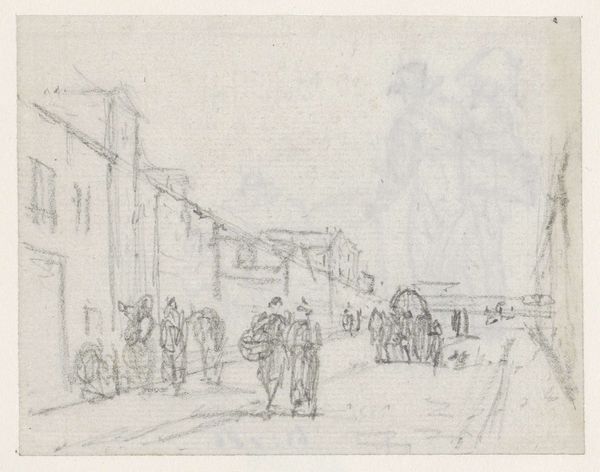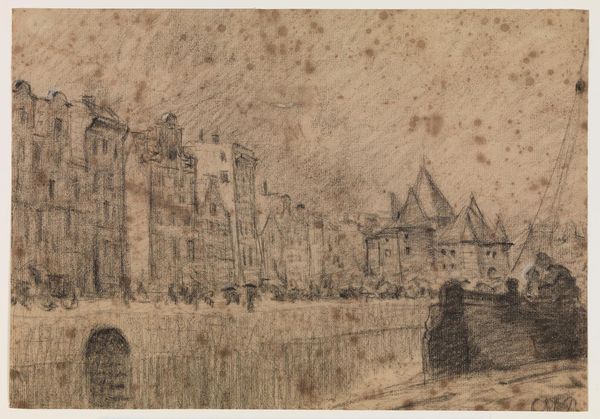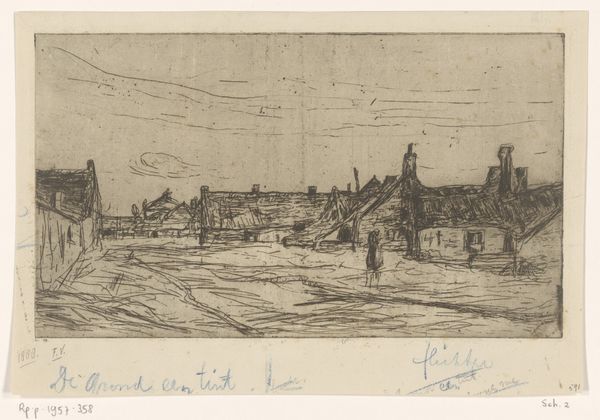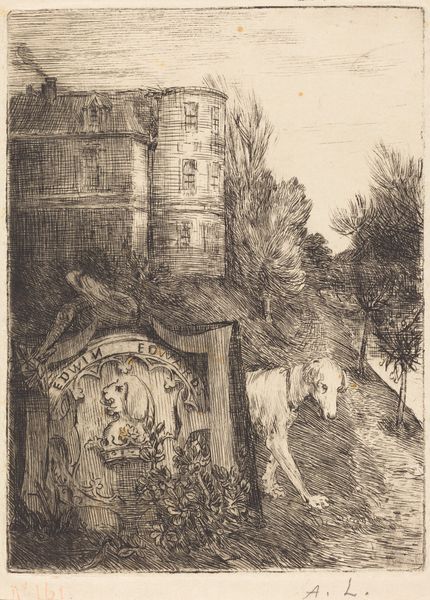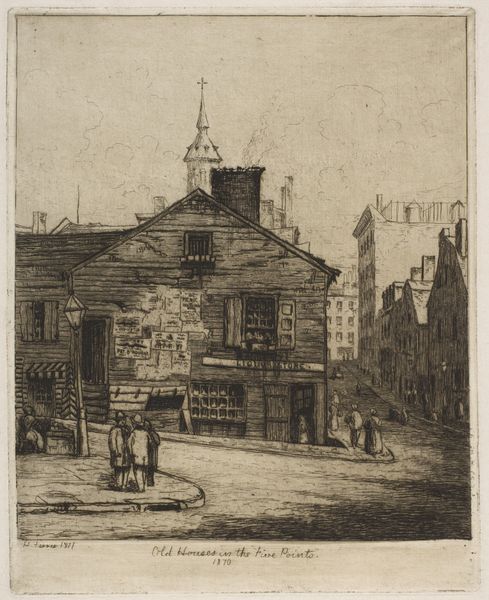
Dimensions: plate: 6.9 x 10.6 cm (2 11/16 x 4 3/16 in.) sheet: 21.5 x 27.9 cm (8 7/16 x 11 in.)
Copyright: National Gallery of Art: CC0 1.0
Editor: So, this is Robert Henri's "Paris Street Scene" from 1904, rendered in ink—I think it's an etching. I'm struck by how immediate and almost fleeting the scene feels. What stands out to you? Curator: The immediate nature you observe likely arises from the rapid, almost frenetic mark-making integral to etching's process. How was this plate made? Was it deeply etched? What acid was used, and how might those decisions change the quality of line and, therefore, the experience of the scene? What can we determine about the printmaking labor that determined its price? Who could afford this artwork in 1904? Editor: Those are interesting angles I hadn't considered. I guess I was focused on the *what* rather than the *how* and *why.* Curator: Indeed, Henri’s choice of etching allows for the mass production and wider consumption of art, diverging from the unique, often inaccessible oil paintings of the wealthy class. Notice how the visible marks, these repetitive strokes, challenge any smooth, illusionistic depth, directing our attention instead to the materiality of the print itself, ink on paper produced to be handled, stored, consumed. Editor: So, the medium itself democratizes the subject, placing scenes of urban life into more hands than paintings ever could. Is that the core argument? Curator: Not solely, but it’s a crucial layer. The choice of ink, the paper’s texture – all these elements contribute to an experience divorced from the preciousness associated with fine art painting and sculpture. What can this piece tell us about the infrastructure of art consumption in early 20th-century Paris? Editor: That makes me consider not just the image, but also how it reached its audience. I now realize the materiality and manufacturing have everything to do with understanding this work and its social role. Thanks for pointing that out. Curator: My pleasure. Art exists in relationship to process, material, audience, and consumption. The history of art lies at the intersection of those concerns.
Comments
No comments
Be the first to comment and join the conversation on the ultimate creative platform.
